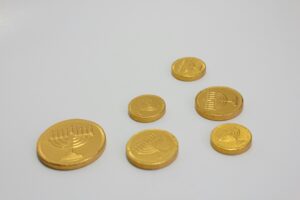In the constellation of global consumer obsessions, few phenomena have burned as brightly or as suddenly as Labubu, a peculiar plush monster that has transformed from a niche collectible into a billion-dollar cultural juggernaut. The plush monster toy has already generated more than $650 million in 2025 for Pop Mart, positioning it to breach the $1 billion threshold by year’s end—a financial milestone that would place this mythology-inspired creature alongside entertainment franchises that took decades to build.
The numbers reveal a business trajectory that defies conventional wisdom about toy marketing and consumer behavior. Pop Mart’s revenue surged by 204%, reaching 13.88 billion yuan ($1.93 billion) compared to the same period in 2024, with net profit skyrocketing by nearly 400%, totaling 4.7 billion yuan (over $650 million). This unprecedented growth has transformed Beijing-based Pop Mart from a regional player into a global phenomenon, with $700 million coming from non-mainland consumers in recent reporting periods.
The Anatomy of a Global Craze: Understanding Labubu’s Appeal
The Character Behind the Commerce
Labubu represents more than merchandising success—it embodies the convergence of mythology, design psychology, and contemporary consumer culture. Created as part of Pop Mart’s “Monsters” series, this 10-year-old character draws inspiration from Nordic folklore, specifically the elf-like creatures of Scandinavian mythology. Yet its appeal transcends cultural boundaries, suggesting something fundamental about how design elements can achieve universal resonance.
The character’s distinctive “ugly-cute” aesthetic—a deliberate juxtaposition of conventionally unappealing features with endearing characteristics—taps into the Japanese concept of “kawaii culture” while maintaining its own distinct identity. This design philosophy has proven remarkably effective in generating emotional attachment among consumers who might otherwise resist traditional cute aesthetics.
The Celebrity Catalyst: When K-Pop Meets Collectibles
The transformation of Labubu from niche collectible to global phenomenon can be traced to a specific moment: when BLACKPINK member Lisa publicly confessed her obsession with the creatures. This endorsement proved to be a cultural tipping point that demonstrates the outsized influence of K-pop celebrities in shaping global consumer trends.
Celebrity exposure has contributed to broader recognition; figures such as K-pop star Lisa (Blackpink) and footballer David Beckham have been spotted with the toys, creating a cascade effect across social media platforms. Following Lisa’s endorsement, celebrities including Cher, Kim Kardashian, Paris Hilton, and Marc Jacobs were photographed carrying Labubu toys as fashion accessories, often dangling from designer handbags as high-end keychains.
This celebrity adoption pattern reveals how contemporary influence marketing can transform niche products into must-have accessories. The sight of Labubu toys adorning luxury handbags created a new category of luxury collectible that bridges the gap between high fashion and pop culture.
The Business Empire Behind the Phenomenon
Pop Mart’s Strategic Evolution
Pop Mart has seen staggering growth — Labubu revenue grew over 1,200% year-on-year in 2024, contributing roughly 22% of the company’s total revenue last year. This growth trajectory has elevated Pop Mart into the upper echelon of global toy companies, with financial performance that rivals established industry giants.
The company’s success extends beyond Labubu, demonstrating the scalability of its blind box model. Four other toy series’ earned more than 1 billion yuan during the period, including “Molly” and “Crybaby,” suggesting that Pop Mart has created a repeatable formula for character-driven success.
The company posted a gross profit margin of nearly 67% last year, among the highest of Chinese firms with major international reach, indicating exceptional operational efficiency and pricing power in the collectibles market.
Global Market Penetration
The international expansion story reveals the global appetite for collectible culture. The most significant growth for Pop Mart was recorded in North America (+1142%), demonstrating how rapidly Western consumers have embraced the blind box concept that originated in Asian markets.
Getting your hands on its signature Labubu doll can set you back anywhere between $40 and $200, alongside an hours-long wait times that have become commonplace at Pop Mart retail locations, creating artificial scarcity that amplifies demand through exclusivity psychology.
The Psychology of Blind Box Economics
The Uncertainty Marketing Revolution
The blind box model represents a sophisticated application of behavioral economics principles that tap into fundamental human psychological drivers. Like those Gashapon machines, these blind boxes contain a hidden item – a collectable, figurine, or even a beauty product. This element of surprise is exactly what makes the blind box economy such a fascinating phenomenon in contemporary consumer culture.
The global Blind Box Toys market size will be USD 14251.2 million in 2024. Growing popularity of collectibles is expected to boost sales to USD 21428.5 million by 2031, with a Compound Annual Growth Rate (CAGR) of 6.00% from 2024 to 2031, indicating that Labubu’s success exists within a broader collectibles boom that shows no signs of slowing.
The psychological appeal operates on multiple levels:
Intermittent Reinforcement: The unpredictable nature of blind box contents creates the same psychological response pattern found in gambling, where uncertain rewards generate more sustained behavioral responses than predictable ones.
Collection Completion Drive: The existence of rare variants and complete sets triggers completionist psychology, encouraging consumers to purchase multiple boxes to achieve full collections.
Social Validation: The unboxing experience has become a social media phenomenon, with platforms like YouTube and TikTok spurring the popularity of unboxing videos, where influencers showcase blind box toys. This visibility encourages purchases and creates a buzz around new releases.
The Digital Amplification Effect
Currently, promotion of blind box products is evident in social media platforms in Asia including Weibo, Douyin/TikTok, and Instagram. Many opinion leaders and celebrities present their collections and unboxing, which stimulates the demand and sales. This creates a feedback loop where social media engagement drives physical sales, which generate more social media content.
The unboxing ritual has evolved into entertainment content, with videos often emphasising emotional reactions—excitement, surprise, or disappointment—reinforcing the collective nature of the experience. This emotional amplification through digital platforms has proven crucial in sustaining long-term engagement with the brand.
Market Dynamics and Competitive Landscape
Comparing Pop Mart to Traditional Toy Giants
The scale of Pop Mart’s success becomes more impressive when contextualized against established toy industry leaders. The company’s Monsters series revenue puts it in direct competition with iconic franchises from Mattel, including Barbie and Hot Wheels, suggesting a fundamental shift in how contemporary consumers engage with toy products.
Traditional toy companies have built their success on character licensing, media tie-ins, and predictable product cycles. Pop Mart’s model inverts this approach by creating scarcity, mystery, and social currency around relatively simple physical products.
The Luxury Collectible Crossover
Labubu’s integration into luxury fashion spaces represents a unique market positioning that bridges collectible toys and high-end accessories. The sight of these toys adorning Hermès and Chanel bags creates a new category of accessible luxury that allows consumers to participate in high-fashion culture at a fraction of traditional luxury goods pricing.
This crossover appeal has created multiple revenue streams and market segments for the same core product, from basic collectors to fashion-conscious consumers seeking unique accessories.
Cultural Impact and Sociological Implications
The Democratization of Collecting
The Labubu phenomenon represents a democratization of collecting culture that historically centered around expensive art, rare books, or vintage items. By creating collectible series with relatively low individual unit costs but high aggregate collection values, Pop Mart has made collecting accessible to younger demographics and middle-income consumers.
This accessibility has fostered community building around shared collecting experiences, with dedicated social media groups, trading communities, and local meetups emerging organically around the hobby.
Generational Consumer Behavior Shifts
The success of blind box culture reflects broader generational shifts in consumer behavior, particularly among Generation Z and younger millennials who prioritize experiences over traditional ownership models. The uncertainty and social sharing aspects of blind box collecting align with digital-native preferences for gamified consumption experiences.
For younger collectors, the excitement of “the chase” can foster compulsive buying habits. This effect is amplified by the social influence of watching unboxings online or seeing friends complete their sets, and it becomes a powerful loop, raising important questions about the psychological impact of uncertainty-based marketing on developing consumer habits.
Regional Market Analysis
Asian Market Dominance
The blind box concept originated in Asian markets, where gashapon machines and collectible culture have deep historical roots. Pop Mart’s success in China demonstrates the scalability of these cultural preferences when combined with modern retail and digital marketing strategies.
The company’s expansion across Southeast Asia has benefited from cultural familiarity with collectible toys and mystery box concepts, creating a natural foundation for rapid adoption.
Western Market Adaptation Challenges
Pop Mart’s blind boxes range from about $5 to $30 and have attracted celebrity fans like Lisa from K-pop group Blackpink. Shares of Pop Mart, traded on the Hong Kong stock exchange, have grown more than 300% in value this year, indicating strong investor confidence in the company’s ability to maintain growth momentum.
However, Western market expansion faces unique challenges around regulatory concerns regarding gambling-adjacent marketing, particularly when targeting younger consumers. European markets have shown particular sensitivity to marketing practices that might encourage compulsive purchasing behaviors.
Economic Implications and Market Sustainability
The Fad Factor: Historical Context
However, as with past toy fads, such as Beanie Babies, the consensus is that Labubu’s explosive rise likely won’t be forever. This comparison raises important questions about the sustainability of Pop Mart’s growth trajectory and the company’s ability to diversify beyond current hit characters.
Historical toy fads have shown consistent patterns of rapid rise followed by equally dramatic decline, suggesting that Pop Mart’s long-term success will depend on its ability to continuously innovate and create new cultural phenomena rather than relying indefinitely on Labubu’s popularity.
Innovation and Product Development Strategies
The company’s portfolio approach, with multiple successful character lines generating significant revenue, suggests awareness of the need for diversification beyond any single character or trend. This strategy mirrors successful entertainment companies that build sustainable businesses around character creation and development capabilities rather than dependence on individual properties.
Supply Chain and Manufacturing Considerations
The success of blind box toys has created unique supply chain challenges, particularly around inventory management for mystery products and managing artificial scarcity without creating genuine shortages that frustrate consumers.
Pop Mart’s ability to maintain product quality while scaling production globally will prove crucial for sustaining premium pricing and brand reputation as the company expands into new markets.
Technological Integration and Future Possibilities
Digital-Physical Product Integration
Future developments might include augmented reality features, digital collectibles tied to physical purchases, or blockchain-based authentication systems that could add new layers of value and engagement to the collecting experience.
The integration of digital elements could help sustain interest beyond the initial physical collecting phase while creating new revenue opportunities through digital content and services.
Data Analytics and Consumer Insights
Pop Mart’s direct-to-consumer retail model generates valuable data about consumer preferences, purchasing patterns, and collection completion behaviors that could inform future product development and marketing strategies.
This data advantage could prove crucial for maintaining market leadership as competitors enter the blind box space with similar products and marketing approaches.
Regulatory and Ethical Considerations
Government Scrutiny and Consumer Protection
Phenomenal global demand for these products has sparked attention from media and government scrutiny, particularly around concerns that blind box marketing might encourage gambling-like behaviors among young consumers.
Regulatory frameworks in various jurisdictions are still evolving to address uncertainty marketing practices, with potential implications for how companies can market mystery products to different age groups.
Industry Self-Regulation Initiatives
The blind box industry has begun developing self-regulation standards around disclosure requirements, odds transparency, and marketing practices to address consumer protection concerns while maintaining the mystery elements that drive engagement.
These initiatives could help establish sustainable business practices that balance consumer protection with commercial viability for uncertainty-based products.
Future Projections and Strategic Outlook
Short-term Growth Sustainability
The Beijing-based toy company is on track to smash its revenue goal of $2.78 billion in 2025, and hitting $4.18 billion this year “should also be quite easy,” CEO Wang Ning told analysts, suggesting confidence in maintaining current growth trajectories through at least 2025.
However, this growth will depend on successful international expansion, continued character innovation, and the ability to navigate potential regulatory challenges in key markets.
Long-term Market Evolution
The collectibles market is likely to evolve toward greater integration of digital and physical elements, with potential applications in virtual reality, augmented reality, and metaverse platforms creating new collecting experiences and revenue opportunities.
Pop Mart’s success with physical collectibles positions it well to lead this evolution, assuming continued investment in technology and digital capabilities alongside traditional product development.
Competitive Response and Market Maturation
As the blind box market matures, increased competition from both traditional toy companies and new entrants will likely pressure margins and require greater innovation in both product development and marketing strategies.
The company’s ability to maintain cultural relevance and create new viral phenomena will prove crucial as markets become more saturated and consumers potentially develop resistance to uncertainty marketing approaches








